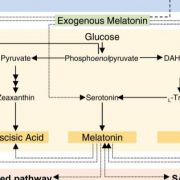
A role for melatonin in the defence of sweet oranges against citrus greening disease
Blog, Plant Physiology, Plant Physiology: News and Views, ResearchIf you regularly enjoy a cold glass of orange (Citrus × sinensis) juice, freshly squeezed or store-bought (who has time for the former, really?), then you should know that the future of this drink is at stake. Citrus greening disease or Huánglóngbìng (HLB) has been wreaking havoc on the citrus industry…
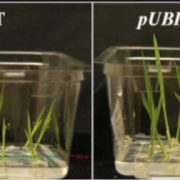
How a Mangrove tree can help to improve the salt tolerance of Arabidopsis and Rice
Blog, Plant Physiology, Plant Physiology: News and Views, ResearchAffiliation: University of Melbourne
ORCiD: 0000-0001-5092-6168
email: [email protected]
Mangrove trees live and thrive in intertidal zones, where they are regularly inundated with salt water. To survive such harsh environmental conditions, they have evolved several features to improve…
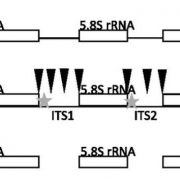
How to make an extraordinary machine: SMALL ORGAN 4 regulates ribosome biogenesis in plants
Blog, Plant Physiology, Plant Physiology: News and Views, ResearchRibosomes are essential molecular machines in the cell that translate mRNA sequences into proteins. Growing parts of an organism produce many ribosomes, so that after each cell division both daughter cells have enough to translate the proteins necessary for growth and development. Defects in ribosomes…
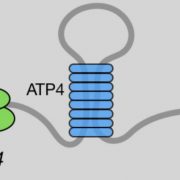
Expanded function of the P-type pentatricopeptide repeat protein ATP4 in RNA editing
Blog, Plant Physiology, Plant Physiology: News and Views, ResearchTianhu Sun
ORCID ID: 0000-0002-2513-1387
Plant Breeding and Genetics Section, School of Integrative Plant Science, Cornell University, Ithaca, New York 14853
[email protected]
Chloroplasts are semi-autonomous organelles that retain their own genomes derived from their cyanobacterial ancestors,…
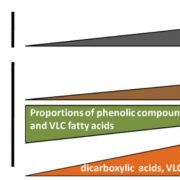
The fat of the land: cuticle formation in terrestrial plants
Blog, Plant Physiology, Plant Physiology: News and Views, ResearchMadeleine Seale
Department of Plant Sciences, University of Oxford, South Parks Road, Oxford, OX1 3RB, United Kingdom
[email protected]
ORCID: 0000-0002-8924-3943
In a world surrounded by a vast expanse of gaseous air, water is constantly evaporating from aqueous sources…
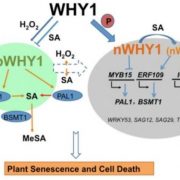
Here, there and everywhere: Plastid- and nuclear-localized WHIRLY1 regulates salicylic acid homeostasis during developmental senescence
Blog, Plant Physiology, Plant Physiology: News and Views, ResearchDoes a new job always come with a new location? Perhaps this is true for some plant proteins; half of the proteins are located in more than one subcellular compartment. Emerging evidence in plants shows that nuclear-encoded proteins undergo redox and posttranslational modifications or processing events…
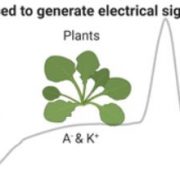
Novel Electrical Signaling: First Fast Voltage-Gated Sodium Channel Identified Outside of the Animal Kingdom
Blog, Plant Physiology, Plant Physiology: News and Views, ResearchStefanie Wege (University of Adelaide), Alexis De Angeli (Université de Montpellier)
Electrical signals or action potentials are present in animals, plants, and other organisms such as single-celled diatoms (Moran et al., 2015; Hedrich et al., 2016; Helliwell et al., 2019). Electrical signals are…
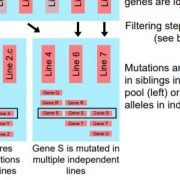
Mutagenomics: The Future of Genetic Screens
Blog, Plant Physiology, Plant Physiology: News and Views, ResearchAnanya Mukherjee
ORCID ID: 0000-0003-1802-1806
University of Nebraska Lincoln
Genetic screens are a remarkable way of identifying mutations affecting various aspects of plant growth and development. Arabidopsis (Arabidopsis thaliana) (T)-DNA insertion lines enable rapid identification of mutant…
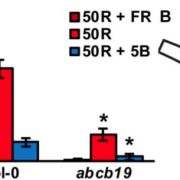
Leaf position makes a difference: the ABCB19 auxin transporter affects light perception
Blog, Plant Physiology, Plant Physiology: News and Views, ResearchAuthor: David S. Favero1 (ORCID: 0000-0002-6879-0323)
[email protected]
Affiliation:
1RIKEN Center for Sustainable Resource Science, Yokohama, Kanagawa, 230-0045 Japan
Main text:
As autotrophs, plants must maintain photosynthesis to thrive. In order for this to happen, a plant’s…

